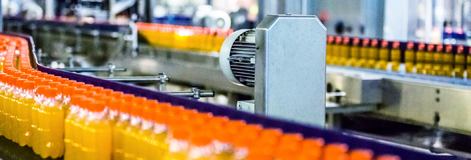The changing risk and liability landscape – Defective product and recall threats evolve
Modern corporate risk and liability exposures can arise from many sources, including third parties, supply chains, products, IT security, new technology and the environment. Global Risk Dialogue examines current and emerging risk management and insurance issues across a number of trends.
A car’s faulty ignition switch shuts off, disabling certain safety devices. Overheating batteries result in a host of laptop fires. Product-related risk is one of the biggest perils businesses face today and tomorrow – with exposures growing in size and number
RISKS
Defective products not only pose a serious safety risk to the public, they can also cause significant financial and reputational damage to the companies concerned. Analysis of more than 100,000 insurance industry liability claims by AGCS shows the extent of the risk. Defective product/work incidents have caused insured losses in excess of $2bn over five years, accounting for almost a quarter (23%) of the value of all claims analysed, making them the top cause of liability loss for businesses globally. Product recall losses are a major contributor to this total.
Manufacturers whose faulty products cause damages may be subjected to a product liability lawsuit by an injured individual or a class-action lawsuit on behalf of many consumers filing non-injury claims. The original manufacturer, however, is not the only one potentially on the hook in product liability cases; others can be component or materials suppliers, assemblers, wholesalers, retailers or repairers (or healthcare professionals, in drug and medical device cases).
Product risk incidents have increased and with complex global supply chains and large numbers of products and suppliers being concentrated on a smaller number of larger companies, liability and recall claims have become larger and more challenging to settle. In large product recall scenarios, a considerable loss in profits and reputation can follow, as companies have to deal with a number of liabilities that can include first and third party recall costs; expenses to inspect, withdraw, destroy and replace the product; business interruption; consultancy costs; and even customer loss of profits. Businesses often underestimate the impact of a defective product or recall incident and the negative effect it can have on financial and reputational damage.
“For a company to understand their own risks, including the manufacturing supply chain, thinking in worst case scenarios helps with mitigating problems and product defects, including future liabilities. For example, a construction company might consider the impact of long-term stability of its supplied products that are used in bridges and the potential reputational exposure should a bridge collapse. To adopt a ‘No, that can’t happen to me’ attitude is wrong and the business could suffer significant losses.”
Juergen Weichert, Head of Global Product Development, Liability, AGCS juergen.weichert@allianz.com
“There is now much attention on how companies deal with defective or contaminated products, how responsive they are and how resilient their product safety systems are. More than ever, consumers are part of the agenda by making choices subject to how companies deal with crises. Tougher regulations and harsher penalties, the rise of large multi-national corporations and complex global supply chains, growing consumer awareness, the impact of economic pressures in research and development (R&D) and production and even growth of social media are just some of the contributing factors behind this.”
Christof Bentele, Head of Global Crisis Management, AGCS
christof.bentele@allianz.com
TRENDS
AGCS analysis shows the average value of a defective product liability claim is almost $300,000 (€263,903). However, the average cost of a significant product recall incident is in excess of $12m (€10.5mn) with the costs from the largest incidents far exceeding this.
Although recall frequency fluctuates year-on-year, and by industry, there has been a steady rise in activity over time, driven by contributing factors such as a rise in product safety regulation; technological advances in testing, making issues easier to detect; identification of new pathogens; impact of economic pressures and cost-cutting; a rise in consumer awareness; growth of social media, which can help early identification of issues but can also exacerbate product recall risk if not well managed; and retailer/original equipment manufacturer (OEM) pressure.




